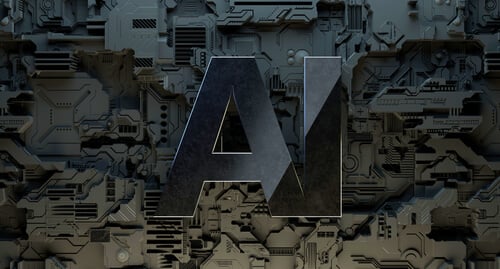From data breaches to sophisticated cyberattacks, enterprises are continuously at risk from a vast spectrum of potential cyber threats from malicious actors.
The need of the hour is not just to react to these threats but to anticipate and mitigate them proactively. This is where developing a hyper-specific Governance, Risk and Compliance (GRC) framework becomes essential.
With that in mind, today's article will review GRC frameworks and highlight a basic outline designed to strengthen cyber resilience. We'll carefully walk you through a tested, systematic process for identifying, assessing, and managing cyber risks.
You'll learn about the importance of thorough risk assessments, real-time threat intelligence, and effective incident response plans. Additionally, we'll highlight modern GRC technologies that offer a clear picture of your organization's overall cyber risk and compliance standing.
Understanding cyber resilience
Cyber resilience goes far beyond just having robust security measures in place; it's a comprehensive framework of an organization's capability to anticipate, respond to, and recover from cyber threats and attacks.
While traditional cybersecurity focuses on protection and defense, cyber resilience adopts a holistic view, integrating both defense and the ability to continue business operations despite threats. As IT infrastructures expand and threats grow in complexity, the need for a solid foundation in cyber resilience quickly becomes an organizational imperative.
Furthermore, the concept of cyber resilience also emphasizes the human element in cybersecurity. People, whether they are employees, partners, or customers, play a pivotal role in the cyber ecosystem.
That's why training and awareness programs, regular updates on the latest threats, and fostering a culture where cybersecurity is everyone's responsibility are essential components of cyber resilience.
The GRC framework: an overview
Governance, Risk, and Compliance (GRC) serve as the pillars of an effective cyber resilience strategy.
They refer to an organization's policies, procedures, and guidelines to manage its cybersecurity strategy. As a result, good governance ensures everyone knows their role in maintaining cyber health.
However, companies must be on the constant lookout for threats to engage them effectively. Risk management involves identifying these threats, assessing their potential impact, and then deciding on the best mitigation strategies.
When it comes to cybersecurity, compliance means ensuring that the organization adheres to both internal policies and external regulations at all times. Regular audits and assessments are integral to accomplishing this.
A step-by-step approach to a proactive GRC framework
The first step towards creating a resilient GRC environment is understanding the various risks involved.
This process involves thoroughly examining the organization's digital infrastructure and identifying weak points and vulnerabilities that cybercriminals might exploit. Regular penetration testing and vulnerability assessments can be helpful, too.
Once risks are identified, the next step is gauging their potential impact. This is where risk assessment tools and frameworks come into play. By categorizing risks based on their potential damage and likelihood of occurrence, organizations can prioritize which threats to address first.
With a clear understanding of the risks and their potential impacts, organizations can then formulate strategies to reduce or eliminate these risks. This might involve technological solutions, like firewalls or encryption, or policy-based solutions, such as enhanced training and stricter access controls.
The role of real-time threat intelligence
Staying updated with the latest threats is crucial in cyber resilience. Real-time threat intelligence provides organizations with up-to-the-minute information about new vulnerabilities, emerging threats, and ongoing cyberattacks.
Leveraging this data helps organizations adapt their defenses promptly, ensuring they are always a step ahead of cyber adversaries. Platforms that aggregate and analyze threat intelligence from various sources can be invaluable, offering insights that might otherwise be overlooked. Additionally, integrating real-time threat intelligence into an organization's workflow fosters a culture of proactive security.
When teams across different departments—from IT to Operations—are equipped with the latest threat data, they can make more informed decisions and collaborate more effectively. This unified approach not only bolsters defenses but also enhances the organization's overall agility in responding to emerging cyber challenges.
Incident response: a key component
Even with the best defenses in place, breaches can happen; that's where having a robust Incident Response Plan (IRP) in place comes into play.
An effective IRP will outline clear protocols for addressing a breach, from identifying and containing the threat to notifying affected parties and restoring systems to their normal state.
Regularly reviewing and updating the IRP and conducting periodic drills ensures that the organization can respond swiftly and effectively when a breach occurs. Beyond the basic technical and procedural aspects of the framework itself, it's essential to recognize the importance of communication during and after an incident. Transparent and timely communication with stakeholders, including employees, customers, and even the media, can make a significant difference in maintaining trust and reputation.
Organizations should have a designated communication strategy within their IRP, outlining who communicates, when, and how. With it, they can navigate the tumultuous waters of a security breach with integrity and assurance by addressing the potential concerns and queries of stakeholders effectively.
Modern GRC platforms offer a plethora of tools to streamline and enhance the cyber resilience process. Automated risk assessments, for instance, can scan an organization's systems and identify vulnerabilities with minimal human intervention.
Compliance tools can track regulatory changes and alert organizations to any potential compliance gaps in their operations. Moreover, dashboard features present a unified view of the organization's cyber health, allowing for quick decision-making and resource allocation.
The use and exchange of documents, especially in PDF format, remain paramount for an array of essential business operations. PDFs are a universal way to share information, from incident reports and presentations to contracts and invoices.
That's why companies need a secure PDF solution with features such as encryption, access control, and digital signatures to ensure the integrity and confidentiality of shared documents. Implementing such robust measures helps mitigate data leakage risks and ensures that sensitive information remains in the right hands. That's right, even PDFs are an attack vector.
Additionally, as cloud computing and AI integration become more prevalent, GRC technologies are beginning to harness these advancements, offering predictive analyses and more efficient risk management solutions.
As cyber threats evolve, organizations must stay agile and proactive. A few best practices include:
-
Continuous training: Staff should be regularly trained on the latest cyber threats and safe online behaviors. This ensures that every organization member becomes a line of defense against cyber threats.
-
Multi-factor authentication (MFA): Forcing MFA for account access helps add an additional layer of security. This safeguard makes it much harder for unauthorized users to gain access to systems.
-
Regular backups: Ensuring data is backed up regularly and in secure locations means that data can be quickly restored even if a breach occurs with minimal disruption.
-
Timely updates: Whether it's software, operating systems, or security tools, keeping them updated ensures that the latest security patches and updates are applied, reducing vulnerabilities.
Establishing a thorough GRC framework can help businesses defend against the various threats out there, and also ensure continuity and recovery in the face of various cyber adversities.
With the right blend of real-time threat intelligence, cutting-edge GRC technologies, and robust incident response plans, organizations can confidently navigate the current complex cybersecurity landscape. Regular training, staying updated with the latest software, and leveraging best practices further strengthen an organization's cyber resilience.





